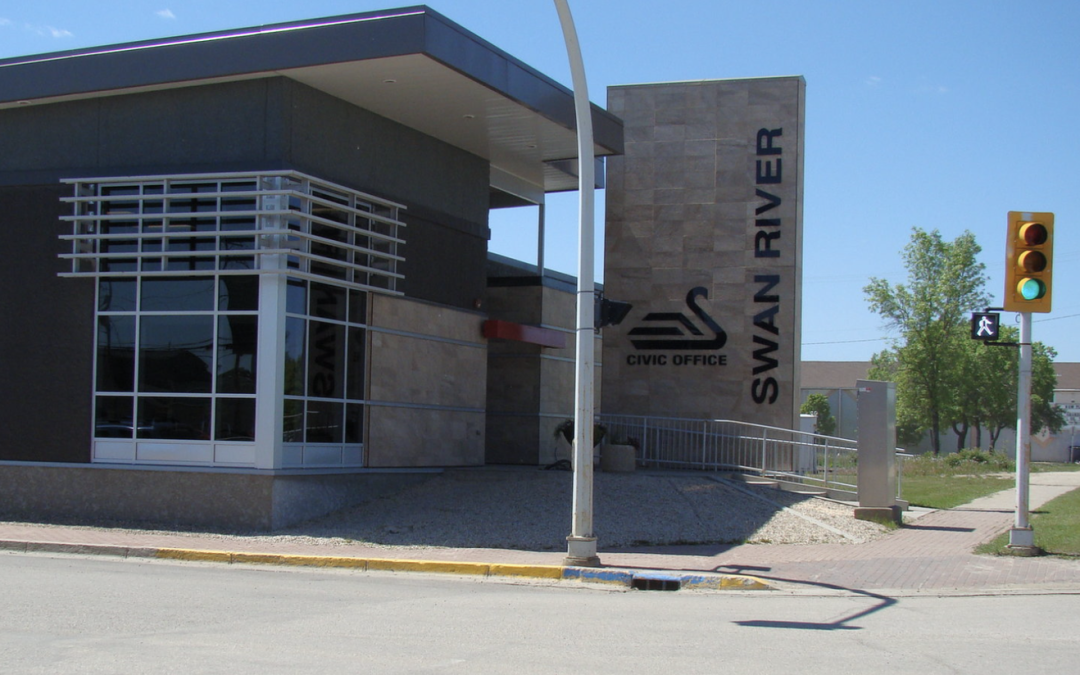Photo: A virtual town hall brought Swan Valley residents and Manitoba health officials together to address the region’s rapidly rising HIV cases, with discussions focusing on testing, treatment, harm reduction, and broader social supports / Photo courtesy Swan River Facebook page, supplied photo
By Steven Sukkau
Local Journalism Initiative Reporter
Winnipeg Sun
The numbers landed like a gut punch. In 2022, just seven people in Prairie Mountain Health were newly diagnosed with HIV. By last year, it was 44. Now, halfway through 2025, the region has already recorded 75 cases.
That surge was the unspoken weight behind Wednesday night’s digital town hall, a virtual gathering where Swan Valley residents asked provincial health officials the question: Why here? Why now?
The meeting, hosted online through EngageMB, drew community questions about the causes of the outbreak, the rapid rise in cases, and the range of responses underway. Representatives from Prairie Mountain Health, the Department of Health, Seniors and Long-Term Care, and the Department of Housing, Addictions and Homelessness fielded questions for an hour.
Dr. Carol Kurbis, a medical officer of health with the province, highlighted the scope of the crisis. “HIV has been increasing in Manitoba since about 2019, with significant increases since 2022,” she said, noting that Prairie Mountain Health has seen some of the sharpest growth. As of mid-2025, the region recorded 75 new diagnoses, more than double the total from the previous year.
Case Numbers
2019: 92 new HIV diagnoses across Manitoba
2022: 200 new cases provincewide
2024: 291 cases provincewide; 44 in Prairie Mountain Health region
2025 (to June 30): 189 cases provincewide; 75 in Prairie Mountain Health region
Behind the numbers are stories harder to quantify: people newly diagnosed, already struggling with homelessness, addiction, or untreated mental illness. People blindsided by a virus long thought by many to be under control. People too afraid of stigma to come forward until it’s too late.
Officials stressed that much of the rise stems from increased testing, which has uncovered previously undiagnosed cases. They also pointed to contributing factors such as injection drug use, unprotected sex, housing instability, and stigma around seeking care. “The solutions are complex,” Kurbis said. “It’s essential that we address broader issues like mental health, housing, and poverty alongside medical treatment.”
Questions from residents focused heavily on harm reduction strategies, including whether safer drug-use supplies are available in the region. Dr. Erin Knight, an addictions physician with Shared Health, emphasized that clean needle distribution remains a cornerstone of preventing transmission. “There’s robust evidence that needle distribution decreases risks of HIV and hepatitis C,” she said. Others noted that preventive medications such as pre-exposure prophylaxis (PrEP) are available in Swan Valley, though uptake has been low.
For some in Swan Valley, the urgency is compounded by politics. Residents pressed officials about the RM of Swan Valley West’s bylaw prohibiting the distribution of clean drug-use supplies, a move some say only drives transmission further underground. Officials stopped short of drawing a direct line, saying it was too early to link local policy directly to infection rates, they pointed to international research showing that limiting access to clean supplies can increase risk of transmission up to threefold.
Dr. Erin Knight, an addictions physician, was blunt: “There’s robust evidence that needle distribution decreases health-related risks. Taking away access could definitely contribute to more transmission.”
Addictions treatment and support services were another focus. Sean Leggett of the Department of Housing, Addictions and Homelessness outlined existing services such as Rapid Access to Addictions Medicine (RAM) clinics, mobile and residential withdrawal management, supportive recovery housing, and expanded digital access to treatment in Swan River. “We don’t want to create barriers,” Leggett said. “It’s about meeting people where they’re at, building trust, and connecting them to care.”
While community members expressed concern over the rising numbers, officials said there are signs of progress, including more people beginning treatment and reduced monthly case numbers in recent weeks. They stressed that treatment can make the virus undetectable and untransmittable, but that long-term success will depend on tackling stigma and social inequities.
The town hall closed with reassurances that the provincial response will continue to adapt. “This remains a priority,” Kerbus said. “We are committed to working together with Swan Valley residents to address this outbreak.”
The hour-long call ended with the same unease it began with: a sense that the outbreak is accelerating and the system is still scrambling, and that a virus most thought belonged to the past has returned, demanding attention now.
